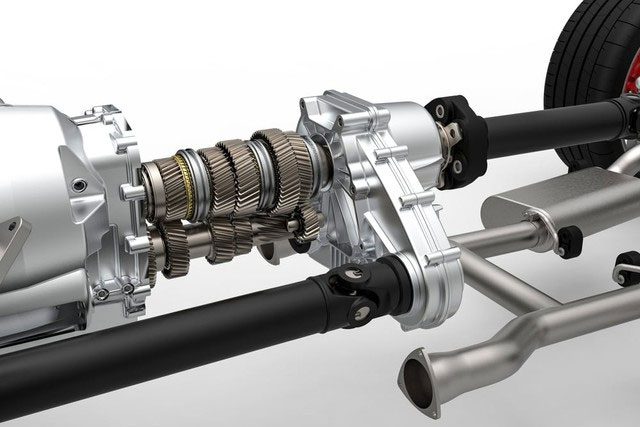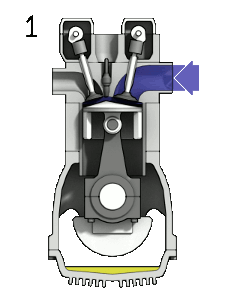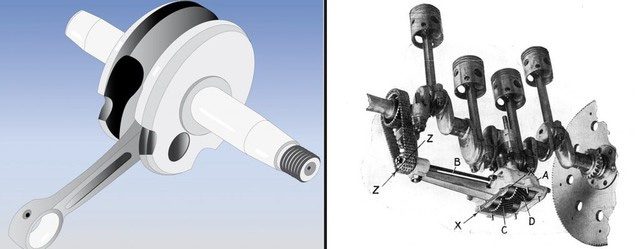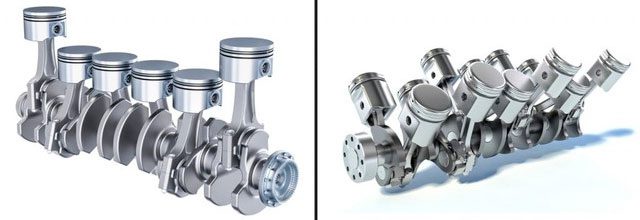The vibrations in an automobile engine are caused by unbalanced forces arising from the translational and rotational movements of its components.
Reasons for Engine Vibration During Startup
While we might seem unaware of vibrations in our vehicles, they serve as subtle reminders that the car is in operation. When issues arise, one of the most common signs is a deviation from these ‘unnoticed’ vibrations during normal operation.
Vibrations are often attributed to the movement of components within the drivetrain. However, this is only partially true, as electric vehicles also have moving parts (the motor) but do not produce the same vibrations. The answer to this perplexing question lies in the design of internal combustion engines.

Vibrations in cars are caused by moving parts within the drivetrain.
Internal combustion engines are piston engines. They consist of a reciprocating component (piston and connecting rod) that generates rotational motion (crankshaft). The combination of translational and rotational motion creates cyclical and unbalanced forces. These forces are what we perceive as vibrations when starting or driving the vehicle.
What Are Unbalanced Forces? Unbalanced forces occur when not all forces in a moving system are counteracted by opposing forces. The residual forces cause various disturbances, in this case, vibrations. The vibrations in an engine primarily arise from two sources: static imbalance and dynamic imbalance.
Static imbalance refers to the inequality in weight and center of gravity of different reciprocating components relative to one another. Meanwhile, dynamic imbalance pertains to the presence of off-center rotating mass, leading to the generation of unbalanced centrifugal forces as the engine operates.

The translational and rotational movements of components in the engine generate unbalanced forces causing vibrations.
What Have Manufacturers Done to Reduce Engine Vibration?
The first step in balancing an engine is to address any static imbalance of the machined components to extremely close and identical tolerances. Engineers strive to resolve most imbalance issues through static balancing.
What cannot be resolved by static balancing will be addressed through dynamic balancing. Here, unbalanced forces are counteracted by balancing shafts positioned opposite them.
However, it is important to note that it is impossible to completely eliminate the imbalance that causes vibrations in piston engines. They can only be reduced to acceptable levels concerning mechanical limits and passenger comfort.

The use of balancing shafts is crucial to mitigate the impact of unbalanced forces.
Dynamic balancing is linked to the engine’s operating speed and includes primary and secondary balancing. Primary balancing addresses unbalanced forces acting at the crankshaft’s rotational speed. Secondary balancing is for unbalanced forces acting at twice the rotational speed. Longer connecting rods than the crankshaft radius will produce these unbalanced forces.
As a general principle, an increased number of cylinders will benefit the engine’s balance. Additional pistons enhance the capability to generate opposing forces, which can eliminate unbalanced forces. Beyond the number of cylinders, the arrangement and firing order also contribute to reducing engine vibrations. Below are several multi-cylinder configurations and their respective balance states.
1. Inline 4 Engine
The inline-four configuration is the most common type found in modern cars. Due to its layout and firing order, its primary forces are perfectly balanced. Conversely, secondary forces must be balanced using a balancing shaft. To prevent secondary forces from exceeding permissible limits, 4-cylinder engines are typically smaller in size and displacement than other types.
2. Inline 6 Engine
This engine is one of the most balanced configurations in piston engines. Each piston has an opposing “partner,” resulting in a well-balanced setup without the need for a balancing shaft or large counterweights.
3. V6 Engine
The V6 engine consists of two banks of three cylinders connected to a common crankshaft. Since the number of cylinders in each bank is odd, these engines exhibit basic imbalance. To address this imbalance, the angle between the cylinder banks can be altered to create an optimal configuration. Common angles include 60 degrees, 90 degrees, and 120 degrees, with 60 degrees being the most balanced layout.
4. V8 Engine
The V8 engine combines two banks of four cylinders arranged at a 90-degree angle. The crankshaft is designed so that two pistons can share a single crankpin. It also incorporates heavy counterweights to balance secondary forces. Six- and eight-cylinder engines are commonly found in sports cars.
5. V12 Engine
The V12 engine can be seen as a combination of two inline-six engines and exhibits exceptional refinement. V12 engines have a very large displacement and are used in powerful sports cars and luxury vehicles.

The Inline 6 and V12 engine configurations are among the best-balanced piston engines.
An unwanted change in normal vibrations can signal some type of mechanical fault or impending failure. Engine vibrations and noise transmission into the cabin also help drivers establish a connection with the road. This is crucial for safety on the road.





















































